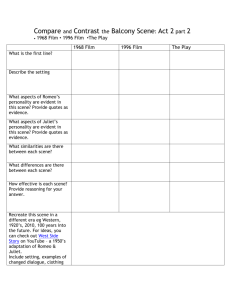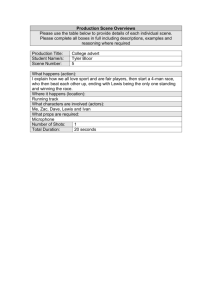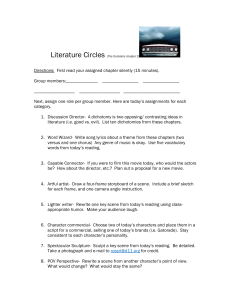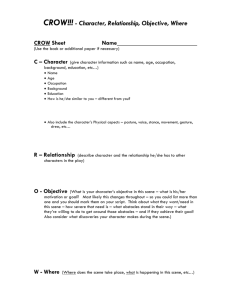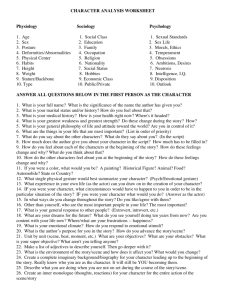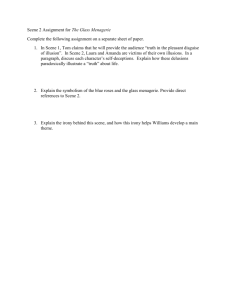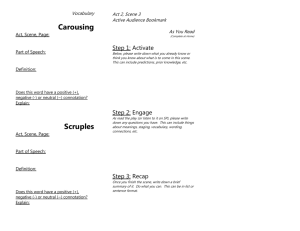script to story 2012
advertisement
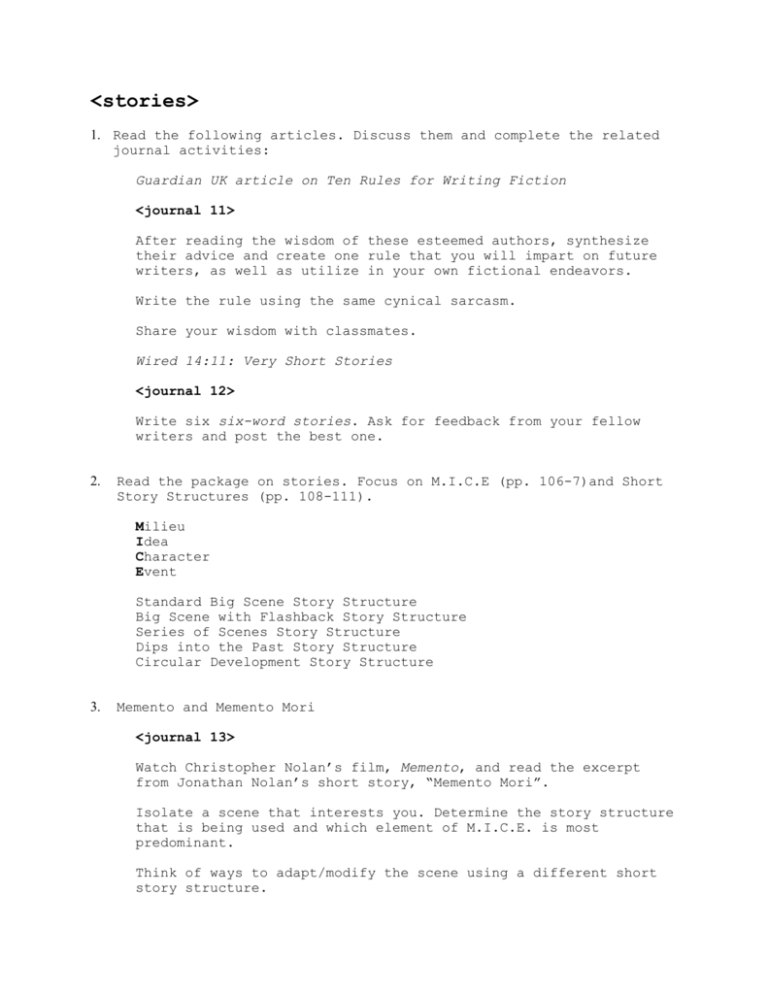
<stories> 1. Read the following articles. Discuss them and complete the related journal activities: Guardian UK article on Ten Rules for Writing Fiction <journal 11> After reading the wisdom of these esteemed authors, synthesize their advice and create one rule that you will impart on future writers, as well as utilize in your own fictional endeavors. Write the rule using the same cynical sarcasm. Share your wisdom with classmates. Wired 14:11: Very Short Stories <journal 12> Write six six-word stories. Ask for feedback from your fellow writers and post the best one. 2. Read the package on stories. Focus on M.I.C.E (pp. 106-7)and Short Story Structures (pp. 108-111). Milieu Idea Character Event Standard Big Scene Story Structure Big Scene with Flashback Story Structure Series of Scenes Story Structure Dips into the Past Story Structure Circular Development Story Structure 3. Memento and Memento Mori <journal 13> Watch Christopher Nolan’s film, Memento, and read the excerpt from Jonathan Nolan’s short story, “Memento Mori”. Isolate a scene that interests you. Determine the story structure that is being used and which element of M.I.C.E. is most predominant. Think of ways to adapt/modify the scene using a different short story structure. <script to narrative> 1. Watch a film of your choosing. 2. Isolate a captivating scene. Think about the scene as a “chapter” in the film. 3. Take notes during the viewing and re-viewing of the "chapter". Focus on the following: _____ _____ _____ _____ _____ _____ milieu idea character events direct/important dialogue from the scene predominant M.I.C.E element used 4. Decide which story structure BEST suits the scene and/or film (the film will probably not be using a short story structure). Use your notes and your imagination and plan to write the scene using a different short story structure. 5. Write the scene like it is a short story. The short story should use M.I.C.E (you do not have to focus on all equally) and essential dialogue. Use the “weapons” developed during the course to communicate creatively and originally. 6. Create a unique title. 7. Use the following formatting when finalizing your submission: • • • • Courier or Courier New size 12 font Double-spaced Maximum 1000 words Title Page title (new, unique title) based on film ________ (year of production) by _______ adapted by Your Name 8. The Modification Process. Write a rationale (max. 500 words) detailing your reasons for adapting the scene using the ______ Short Story Structure (and not the original), as well as how you incorporated the M.I.C.E elements into your short story. Include at the end of your story. Use the same formatting and title the section, “The Modification Process”. <evaluation> name _____ use of descriptive/figurative language _____ use of sentence lengths/variety strategies _____ use of story elements (i.e. milieu, events, characters) _____ use of direct quotes and state of mind (i.e. establish character, reflect mood/tone) _____ quality, creativity, and sophistication of the story-telling/ communication _____ sophistication of rationale (indicates understanding and application of the ideas and strategies _____ grammatical fluency /20
